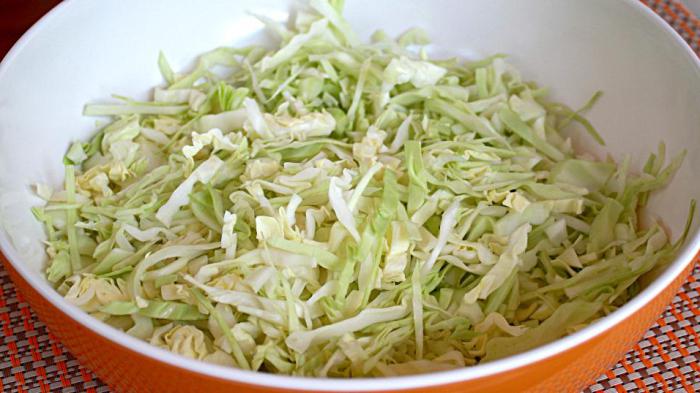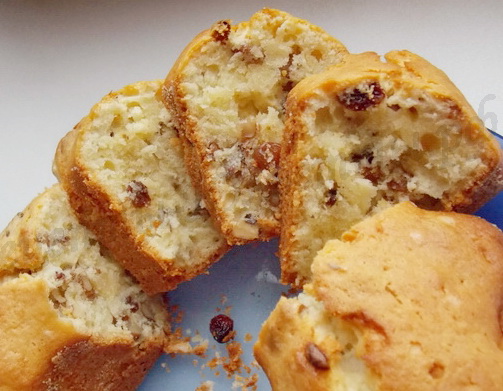Palm oil: harm and benefit to human health. Palm oil melting point, production features, benefits and harms
In recent years russian milkmen We were preoccupied with the problem: every year more and more palm oil is being imported into our country, and dairy products, to which it is added, already make up 30% of their industry. Palm oil greatly reduces the cost of production and prolongs the shelf life of the product, but it is harmful to health.
Recently, manufacturers of milk and products made from it have contacted proposal to V.V. Putin: force manufacturers to write “contains palm oil” on product packages or even ban its import into our country. However, it is very difficult to “force” to refuse to receive huge profits for those who have already heated their hands in palm oil and turned into a millionaire in six months. No wonder in the countries that sell palm oil - Indonesia, Thailand, Malaysia, India and Nigeria, they say: it is more profitable to have a plantation of oil palm trees than an oil well.
Palm oil It has a pleasant aroma and taste of milk cream, due to which it can significantly enhance the taste of the products to which it is added. In addition, it significantly extends the shelf life and reduces the cost of goods. Clear business corporations that receive large profits by selling and using the "palm", every year they try to increase business income. Therefore, today most of the dairy products sold in our stores has nothing to do with milk.
Palm oil mainly used as an alternative to milk fat. Most of it is found in margarines, butter, cheese, sour cream, cottage cheese, yogurt, condensed milk and dried cream. In addition, in order to improve the taste and appearance of the product, extend the shelf life, palm oil is added to cakes, cakes, rolls, muffins, crackers, cookies, rolls, chocolates, bars, glazes and chocolate itself. Palm oil is indispensable in the preparation of chips, french fries, fast food, hamburgers, cheeseburgers, etc.
Technical regulation of the Customs Union the use of pure palm oil in food products on its territory is officially prohibited. Only “milk fat substitute” is allowed to be added to dairy products - palm oil, which is close in terms of milk fat. However, it is unprofitable for manufacturers to observe this regulation, because palm oil costs 5 times cheaper than milk fat. Therefore, those who buy an expensive substitute for vegetable fat complain that they are selling ordinary palm oil instead!
In 2005 World Health Organization officially recommended reducing palm oil intake to prevent an increase in the number of patients with cardiovascular disease. Especially harmful is the use of products containing palm oil for young children. It is proved that frequent regurgitation, colic, constipation in babies are a consequence of feeding with baby mixtures, which contain palm oil!
Recently, they have increasingly become advertise palm oil, describing its unique useful properties. And this is true, but only expensive red palm oil, which is unprofitable to add to food, is useful. The commercial interests of the manufacturers force them to look for a replacement, so they make their products with industrial palm oil, which is hazardous to health.
In countries The European Union it is allowed to use palm oil with a peroxide number of not more than 0.5 units in food production, and in Russia the indicator is 10. The oil is used in the West as machine oil for lubricating equipment, and we eat it! In addition, according to GOST, palm oil should be transported in stainless steel cans, and recently it turned out that the main importer of the “palm” to Russia, the Food Ingredients Group of the EFKO group of companies, transported palm oil in containers from petroleum products. Most often, this oil is stored in plastic tanks, for this reason cadmium, arsenic, mercury, lead and other heavy metals hazardous to health may be present in it.
Palm oil obtained from the fruits of a special oil palm. It contains more than 50% saturated fatty acids and, like animal fat, has the property of being deposited in arteries and contributing to increased cholesterol. Palmitic acid, which is one of the main components of palm oil, promotes the formation of fatty plaques on the walls of blood vessels and, if overused, leads to atherosclerosis, heart disease and can provoke oncology.
Unfortunately, it is very difficult these days to protect yourself from consuming such harmful palm oil. After all, to reveal its presence in the product is almost impossible. Manufacturers on the labels instead of the words "palm oil" usually write "vegetable oil" or "vegetable fat", which we perceive as a useful product.
Nutritionist Arian Gryumbax recommends: "To protect yourself from the harmful effects of palm oil, the main thing is to limit the use of industrial products and not eat what was not during your grandmother's life!". This means, try to consume natural milk and products made at home. Do not buy confectionery and dairy products with a long shelf life, especially try to limit children from consuming them. Never eat fast foods, chips, cheap rolls, cakes, pastries, curd cheeses, condensed milk, cheese and curd products, yogurts, ice creams, chocolates and candy bars. Do not save money to the detriment of health!
What do you really know about palm oil? I am sure they read and heard many times how harmful it is to health! And what kind of scoundrels are these food manufacturers adding it everywhere they can and cannot ... Poison people ...
Over the past couple of years, who and what just did not write about it! Arguments and Facts erupted in a surprisingly ignorant and one-sided little article. Komsomol was more adequate by inviting experts. And for “palm oil harm”, search results are led by dark and dubious sites with anonymous authors, like parrots repeating the same thing: “palm oil is harmful and deadly” based on only one argument. Palm oil, you see, contains palmitic acid (a natural component of all oils, but mainly animal fats)! And therefore mortally dangerous! 🙂
I decided to understand and study the matter more deeply. I do not like these tantrums in the press and on the web! Still, there is a chemical-biological education. And I am able to distinguish the blizzard from normal science.
It all started with a recent visit to the local market, where I came across a surprisingly low price for cottage cheese in a long-known store. To my question about the price, the seller only smirked and was indignant: “Well then go look for yourself cottage cheese for 300 rubles” ... Her “cottage cheese” cost 150 rubles per kilogram. And I know that normal cottage cheese should cost between 240-300 rubles (data for January 2017).
Palm oil. What is this all about?
Palm oil is a natural vegetable oil extracted from oil palm (the Latin name for the species is Elaeis guineensis). The oil itself is obtained from the fruits of this palm. From their meaty part and seeds. Seed oil is called palm kernel. The main territories where oil palm trees are grown are Southeast Asia (Malaysia, Indonesia), Africa, and Latin America.
People have been using palm oil for several thousand years, according to archaeological finds. In Egypt, an ancient amphora was found, on the walls of which traces of this oil were found.
Palm oil is quickly gaining a position in the export and import of goods around the world due to its unique properties and low price. Moreover, the extraction of palm oil is a very profitable business (literally an order of magnitude than obtaining other vegetable oils).
The physical properties of palm oil are such that they make it a very convenient additive in the production of many foods: dairy, confectionery, etc. The fact is that the melting point of this oil lies in the range from 33 to 39 degrees Celsius. And at room temperature, the oil is solid.
The chemical properties are also very impressive. Suffice it to mention the very high content of vitamins A and E. And also the high content of antioxidants. The presence of palm oil in the product increases its shelf life, as it does not go bitter for a long time. It is a wonderful natural preservative.
Therefore, it is not surprising that we encounter palm oil in every second food product. And this is just the beginning. Nowadays, palm oil production is a powerful economic trend. And this must be reckoned with.
But is this a cause for alarm?
The only "minus" of palm oil, according to most "critics", is the high content of saturated oils (palmitic and myristic) in it. These acids in palm oil about 50%. And, as you know, it is products with a high content of saturated fatty acids that lead to an increase in the level of "bad" cholesterol in the blood.
It turns out a very interesting situation. We consider products made using butter to be natural and healthy. For example, ice cream. And ice cream with palm oil is fake and unhealthy. Where is the logic? Butter is almost entirely composed of saturated fats. Palm is only half. So, ice cream with its use is definitely devoid of this minus (an increase in cholesterol).
So is palm oil harmful or not?
And the problem is not that palm oil itself is harmful. Oil is like oil with its own characteristics. Like olive, sunflower, rapeseed. Like any other type of fat, they simply do not need to be abused.
The problem is that palm oil can be of different qualities. The range of applications of the oil is very wide. It is used in cosmetology and even in technology, as lubricants. More precisely, its refractory (palmitic) fraction.
So, often, suppliers and buyers of oil, wanting to save money, use not the most suitable varieties of palm oil. And it, if it goes to the manufacture of food products, must be of a certain, very high quality. Of course, there are smart people using all kinds of loopholes and opportunities to make money on cheap low-quality raw materials for the food industry. But this is another criminal problem.
Just be interested in what you buy for lunch. And from whom you buy. Read the labels. Turn on receptors when trying new foods or eating familiar foods. Very often I came across myself and heard from people that the new product that appeared at first was very tasty and of high quality. After a while, when the brand is untwisted, the product deteriorates in taste and appearance, and is stored worse. It is easy to conclude that they are starting to use cheaper raw materials, including palm oil of inadequate quality.
The inscriptions on products such as "vegetable fat", "vegetable oil substitute", etc., when the wording is very foggy, almost always indicates that the product uses palm oil. And the cheaper the product, the lower its quality, of course.
Manufacturers, of course, are required to honestly write that the product is made using such and such raw materials. However, not everyone does this. Unfortunately, unbridled corruption easily allows this.
By the way
The famous doctor Kovalkov (a nutritionist from Moscow) believes that palm oil is a very successful replacement for another common fat - margarine. It was once considered a very good alternative to butter due to its low cost. However, studies have shown that margarine has many so-called trans fats. These substances can cause serious damage to health, up to oncology. Margarine is usually added to baking and baking. Here palm oil comes in handy.
There is also evidence that the use of palm oil components in baby food slightly reduces the absorption of calcium by the child's body. However, these data are very vague and ambiguous. I believe that on their basis it is too early to sound the alarm.
In general, there is no need to be afraid of palm oil. Just do not overeat with confectionery, fatty dairy products, etc. Without palm oil, they are not very useful. Read the labels carefully so as not to be fooled. And, of course, pay attention to the price of the product. Well, a quality product made of natural components cannot cost half the price!
If you come across other important information about palm oil, please mention them in the comments.
Why did palm oil begin to be added to all products? Properties of palm oil, which is due to its harm to humans. What causes the harm of palm oil to humans?
In Thailand, Indonesia and Malaysia, a plant such as oil palm is very common. This is a very cheap product, while palm oil is very close to butter in terms of composition. Both palm and butter contain the same amount of saturated fatty acids, but palm oil contains twice as many polyunsaturated fatty acids. There is a difference in texture, at a temperature of 45 degrees, palm oil remains creamy, so it is convenient to use it for the manufacture of dairy products and confectionery.
Palm oil for domestic use in manufacturing countries differs from that sent for export, including for our country. In order to get high-quality palm oil, fresh fruits are needed, the spinning process occurs no later than within 24 hours after collecting the fruits from the palm. Raw materials undergo multilevel preparation and cleaning, then they are packed in airtight containers for sale. Processing and packaging must occur very quickly, the tightness of the packaging must not be compromised, otherwise the oil will undergo oxidation processes. Oxidized palm oil is a huge health hazard; this product is toxic and can cause cancer. In Russia there is a regulation on the food industry, according to the document, only high-quality palm oil should be allowed into production, but despite this, manufacturers often use oxidized palm oil.
There is an opinion that palm oil cannot be broken down in the human body due to its high melting point, but this is not true. A special enzyme, lipase, works in the human intestines, it performs the function of splitting fats and will cope with palm oil, as well as with other oils. However, a high melting point will affect the duration of digestion, the process will take longer.
Why is palm oil dangerous?
Palm oil, like many other common foods, contains saturated fatty acids, their excessive consumption leads to violations of the integrity of the walls of blood vessels. This is only one of the reasons leading to such consequences, but at the same time it is very common. The American Association of Cardiology does not recommend exceeding the daily intake of saturated fat - this is 7% of the total calorie intake of the daily diet, and when consuming palm oil it will be very easy to exceed the norm.
Using palm oil, the manufacturer misleads the consumer. It is advantageous to add a low-cost product to dairy products and confectionery instead of butter, to fry chips and other snacks on it, moreover, it can be omitted from the list. According to the rules of the current legislation, cheese using palm oil should deal with a cheese product, cottage cheese with a curd product, but this recommendation is constantly violated.
There are several criteria by which you can identify the content of palm oil in foods. The first and main of them is cost, palm oil products are significantly cheaper. Cheese costing 250-300 rubles per kilogram and cottage cheese at a price of 100 rubles per kilogram cannot be natural, they were cheaper due to palm oil. If we are talking about dairy products, then they should not contain vegetable fats, so if you found such a component in the composition, you know - palm oil is so veiled.
Palm oil becomes even more dangerous when it undergoes hydrogenation, that is, when solid fat is made from it. In the process, trans fats are formed, they are disconnected in structure from those fats that are necessary for a person.
The body uses fats to build cell membranes, it is very difficult to build them from trans fats, and if it works out, the cell will become unviable.
Cells begin to break down, not living their biological cycle to the end, it accelerates aging and contributes to the development of age-related diseases.
Most often, palm oil is present in those products in which there are enough harmful additives without it - these are chips and crackers, cookies and sweets, yogurts and processed cheeses with a lot of dyes, flavorings, stabilizers, salt and sugar. Palm oil is also used for frying, it is prepared in inexpensive fast-food establishments, the frying process is the most harmful processing of products, especially with poor-quality oil. If you choose the most natural products for your diet, then protect your body from the harmful effects of palm oil.
Palm oil is inherently a plant product. It is customary to add it in the manufacture of confectionery products, the storage periods of which undergo a sufficient amount of time.
Since 2015, the production of this product has exceeded all its expectations - twice as much as soybean, sunflower and other oils. However, the benefits and harms of palm oil haunt many consumers. Let’s try to find out if it is really useful or if there are certain concerns that should be avoided. And if there is, then what is harmful palm oil for a person in food.
In contact with
The benefits and harms to the health of palm oil are summarized by how the treatment took place.
Composition and properties
Two components that have a significant effect on the degree of melting of palm oil are stearin, which is a solid fat, and olein. The second component is a substance of liquid consistency. The composition of palm oil itself looks like this:
- vitamin E
- acids - lauric, myristic and palmitoleic;
- phosphorus.
Useful properties of palm oil:
- This ingredient has a lot of calories, and after it you do not want to eat, because you feel full.
- The benefits of palm oil are not only in the saturation of the body with energy, but also in improving brain activity.
How are they made and what are they made of?
Now you can open the veil of secrecy of what palm oil is made of. The oil mixture is squeezed from the fruits of palm trees. It is commonly called oilseed. This tree grows in Africa, Indonesia, Southeast Asia and South America. It is considered one of a kind raw material from which palm oil is made. For culinary delights you only need a product that has passed all stages of refining. And in other cases, soap and candles are made from this substance.

Ripe Oil Palm Fruits
It remains to figure out how palm oil is made. Palm fruits collected from plantations are treated with dry hot steam. Next is the sterilization of the pulp, and only then it goes to the press. The raw material resulting from such actions is heated to a temperature of one hundred degrees and placed in a centrifuge. Thus, excess fluid is removed.
A plant product is refined in several main steps:
- mechanical impurities are eliminated;
- phospholipids are excluded;
- fatty acids are separated;
- there is a bleaching procedure;
- the resulting product is deodorized.
Different degrees of processing affect how harmful palm oil is and where it is used:
- Standard product. Melts at 36-39 degrees. It can be fried, baked. At the time of cooking there will be no smoke or burning. And it is advisable to eat food that was cooked in palm oil warm, otherwise an unpleasant-looking film may appear during cooling.
- Olein. It melts at a temperature of 16-24 degrees. It has a creamy consistency. Such a substance should first be heated, and only then fry the meat on it. The tool is actively added to cosmetics.
- Stearin. It melts less than the rest - 48-52 degrees. It becomes hard. Used for cooking, present in cosmetics.

Palm oil of varying degrees of processing
The look of palm oil indicates that it does not look like coconut or soy. The consistency is rather soft. Fresh light orange oil.
For it to be used for cooking, it is necessary to discolor it. The oil component is heated in the oven to two hundred degrees, and then cooled. Oxygen destroys the natural pigment, and the oily substance loses its original color. Therefore, most consumers wonder if palm oil is harmful in such a treatment.
Benefit for health
It is too early to talk about the dangers of palm oil for human health, while it should be understood what benefits it brings. This oily substance benefits the stomach, and it also helps the intestines. It can be taken with the slightest damage to the mucosa, since in this case, healing is much more effective.
It is sometimes difficult to imagine what harm the palm oil does to the body when this drug has a beneficial effect on metabolism with limited use. The oily substance will be an excellent assistant in case of diseases of a mental and nervous nature, it also relieves chronic fatigue, and improves brain activity.
It is especially useful for women to take this remedy, since it is fully enriched with fatty acids, as well as various vitamins, thanks to which the reproductive system works well. Recommended for ovarian, uterine or breast diseases. About whether palm oil is harmful in infant formula, we will discuss a little later.
Palm oil has a beneficial effect on the epidermis. Relieves symptoms of psoriasis, acne, helps with pressure sores and burns. It is enough to lubricate those areas of the skin that need healing. To make the treatment process more effective, the substance is also taken orally.
Harm of hydrogenated (modified) product
However, the gold medal has a second, dark side. You should find out what is dangerous palm oil. In the twentieth century, especially in the second half, the boom of modified food products began. Moreover, artificial fats are an inexpensive substitute for animals. We find out what harmful hydrogenated palm oil is for humans.
What are trans fats?
 By its consistency, fat can be solid as well as liquid. These categories of fats are divided into:
By its consistency, fat can be solid as well as liquid. These categories of fats are divided into:
- saturated - this is a fatty acid consisting of a carbon chain, and that is surrounded by hydrogen atoms (solid fat);
- unsaturated - the same molecules of fatty acids, but not completely covered with hydrogen (liquid fat).
Hydrogenation (modification) of the product can be described as the enrichment of acids with hydrogen. Only the spatial structure changes, unsaturated fat turns into saturated fat. Thus, the appearance of trans fats (and in modified palm oil) occurs.
Trans fats are beneficial for commercial purposes, since the shelf life of a chemically modified product is much longer. He also has a pleasant creamy taste.
Consumers are bribed by the relatively low cost of such a product, and, as a rule, they do not imagine why palm oil that has undergone preliminary processing is harmful. The price of a natural product is much more expensive than, for example, taking margarine into account, as well as modified palm oil.
How are they dangerous to humans?
Hydrogenated palm oil is cheaper than natural: it does not particularly benefit, but its harm is obvious. Such savings and passion for trans fats can turn into an unpleasant surprise for the body. Such products are dangerous. Wrong fat molecules take part in lipid metabolism in the body, which over time becomes the cause of:
- obesity
- atherosclerosis;
Trans fats also affect sex hormones. Pregnant women are not advised to get involved in modified foods (hydrogenated palm oil also applies here).
With the excessive use of such products, a person gains weight dramatically. In addition, they negatively affect the endocrine system.
What products are contained in?
 Considering how palm oil is extracted, and the fact that it is quite inexpensive, it is therefore a frequent component of confectionery:
Considering how palm oil is extracted, and the fact that it is quite inexpensive, it is therefore a frequent component of confectionery:
- chocolate candies;
- cakes
- gingerbread cookies;
- waffles and other sweets.
Palm oil is in the vermicelli, prepared in a couple of moments, in seasonings to improve the taste. Now you can imagine what it is - palm oil and how it is harmful to health.
Why add to baby food?
Now it’s worth figuring out what the harm and benefits of palm oil are in baby food. These cereals and mashed potatoes replace the breastfeeding laid down by the nature. The difficulty is due to the fact that no manufacturer has yet been able to create an analogue of milk to a nursing mother. But the newborn must constantly receive exactly those elements that are present there.
The choice of manufacturers falls on palm oil due to the fact that it is inexpensive. It is exported from countries with underdeveloped economies and cheap labor. Sometimes it is replaced with similar oils, such as coconut or soy.
Studies have been conducted that have successfully demonstrated how a decrease in calcium absorption occurs from infant formula containing palm olein (called palm oil in Russia).
Impaired absorption can be directly explained by the placement of palmitic acid on a fat molecule. In olein, it is located on the side, there is its cleavage at the moment when the composition is digested in the intestines of a little man. Thus, palmitic acid binds calcium contained in baby food and forms calcium palmitate, but it does not dissolve in any way, is not absorbed, and leaves with stool. The chair itself becomes denser, its frequency becomes much less.
However, most mothers are afraid of the presence of palm oil in infant formula, because it is likely that it brings not only benefits, but also harm. Some babies have constipation, frequent spitting up. But often, such symptoms indicate poor quality products, and you do not need to focus on what palm oil is made of and why it is harmful to children.
Useful video
A little more about palm oil and its effect on the body:
Conclusion
- Palm oil is added to products, and when compared with vegetable oils traditionally used in cooking, the harm from it is greater, and the benefits are less.
- It should be borne in mind that ordinary palm oil reduces the absorption of calcium in the intestine. In addition, almost 50% of the fat in it is represented by saturated acids, the consumption of which should be minimized in certain conditions (e.g., at).
- It is necessary to monitor the content of palm oil in food and limit its intake.
- The hydrogenated or otherwise modified product is trans fat and harms the body in any quantity.
Exotic palm oil has recently appeared in European countries. But due to the low cost and long shelf life, this product interested manufacturers of the food industry and quickly gained crazy demand. According to scientists, today about 50% of all products in sealed containers contain this supplement, although the benefits of palm oil are a big question. This product is widely used in cosmetology, soap making, in the manufacture of candles and as a lubricant.
What is palm oil?
Palm oil A plant product derived from oil palm exclusively from ripe seeds. This plant grows in Malaysia, Guinea, Indonesia.Eight times more oil than sunflower can be produced from one hectare of the oil field. The benefits and harms of palm oil are closely studied by scientists, and heated debate is underway about its negative effects on the human body.
In many developed countries, the question of the complete cessation of the supply of this dangerous product has repeatedly been raised. For half a million residents of palm oil supplying countries, this work is the only way to feed their families and earn a living.
Today, palm oil is one of the most popular and common vegetable fats. Due to the low cost and excellent taste of this vegetable oil, residents of countries such as Southeast Asia and Latin America use it almost daily and consider it an integral component of their diet.
What palm oil is made of
What is harmful palm oil
The benefits of palm oil have always been studied by experts and have been a big question. Today it has already been proven that the harm of this product outweighs the benefits, so it is completely unsuitable for daily use.

The fact is that the main components of this product are saturated fats that are resistant to the effects of our environment. Oil retains its taste for a long time, does not deteriorate - in other words, it is a good preservative. When it is added to food products, their shelf life increases, and manufacturers spend at the same time a minimum of funds, which is economically very profitable.
However, the harm of palm oil to humans is enormous. The use of products containing this product in their composition can lead to the destruction of the immune system, deterioration of the body, as well as the occurrence of the following pathologies:
- Increased cholesterol;
- Vascular damage;
- Impaired lipid metabolism;
- Atherosclerotic deposits;
- Diabetes;
- Alzheimer's disease;
- Obesity;
- Cardiovascular diseases;
- Oncological education;
- Dependence.
Nutritionists, having studied the dangers of palm oil, strongly discourage the purchase of products that include this cheap fat replacer. French fries, condensed milk, instant noodles, chips, chocolate paste, crackers, crackers - when buying these and any other products, carefully study their composition. If the label indicates that the product contains this exotic oil, refuse (it is better to refuse) from its purchase!
The benefits of palm oil
High-quality palm oil contains many vitamins and substances that have a beneficial effect on the human body. Do not forget that it contains unsaturated acids that significantly reduce blood cholesterol. Also, these substances are extremely necessary for the body to form healthy joints, epidermis, skeletal system.
 Palm oil is an excellent preservative and is part of confectionery, as well as detergents, shampoos, soaps. Important!
Palm oil is an excellent preservative and is part of confectionery, as well as detergents, shampoos, soaps. Important!
The benefits of palm oil, despite its obvious harm, are still there. It is an excellent source of valuable antioxidants that strengthen the immune system, protect cells from harmful sunlight and radiation. In addition, palm oil contains triglycerin (a type of fatty acid) that is similar to cow's milk protein.
This substance is quickly absorbed in the body and is completely transformed into energy. Palm oil is useful for people who have problems with the absorption of other vegetable fats, as well as athletes seeking to quickly build muscle.
The presence of vitamin A in the oil has a positive effect on vision, and a special substance called lutein improves the functions of the eye retina, normalizes the condition of the conjunctiva and cornea of \u200b\u200bthe eye. Vitamin E normalizes eye pressure, protects the lens from cataracts and has a beneficial effect on the circulatory system of the organs of vision.
Due to the wound healing and anti-inflammatory properties, this type of oil is widely used in cosmetology and pharmacology - it is included in various creams and medicinal ointments. And three types of fractions allow the successful use of palm oil in the production of washing powders, lubricants, candles and soaps.
Palm oil in baby food
Hydrogenated palm oil
What is palm oil: product benefits and production features. Does palm oil harm the body?
Regarding a product like palm oil, which is increasingly becoming a constituent ingredient of not only food, but also cosmetics and procedures, serious debate continues to exist. Does it relate to harmful products? What can be useful properties of vegetable fat and whether palm oil is capable of causing harm to the body, you can find out by reading the composition.
Palm oil and beneficial properties: what the product is made of
Palm oil is a plant-derived product that is extracted from ripe oil palm seeds. Such a plant can be found in Indonesia, Guinea, Malaysia.
Ready palm oil is divided into 2 categories:
The raw look, which is produced from the pulp of the seeds of palm trees;
The palm kernel species, which is made from the inner core of the fruit.
You can also divide all palm oils into 3 fractions, which differ in quality, melting point, and areas of application:
1. Palm stearin - a solid structure, which is smelted at a temperature of 46 to 53 ° C. It is used for the production of margarine, cosmetics and detergents, puff pastry.
2. Standard oil with a melting point of 36 to 39 ° C. It is used for frying, it does not emit fumes when heated, does not form smoke, and is most often used for the manufacture of confectionery.
3. Palm olein - a product having a liquid consistency similar to a cream, and a melting point from 19 to 23 ° C. The most common areas of application are cosmetology and cooking.
The richness of the chemical composition of palm oil: the benefits of components
Palm oil has a fairly saturated composition, which includes such substances:
Carotenoids - components that take an active part in many vital processes necessary for the normal functioning of the body;
Vitamin E, which consists of isomers of tocotrienols and tocopherols;
Vitamin K is able to protect the body from many complications in the body in the form, for example, ossification of cartilage, salt deposits on the walls of blood vessels and others;
Polyunsaturated acids, which are assigned to the Omega 3 and Omega 6 groups;
Palmitic acid - it accounts for about 50% of the bulk of the oil, fatty acid acts as a source of energy for the body and takes a direct part in the synthesis of hormones;
Oleic acid is considered a monounsaturated variety of fats and serves as a barrier to the formation of cholesterol plaques in blood vessels;
Stearic acid;
Vitamin A and B4;
Macro- and microelements phosphorus and iron;
Coenzyme Q10.
An important role in obtaining high-quality oil is played by the production process itself. The conventional pressing and spinning method gives the result in the form of a technical product that does not have all the beneficial properties and is unsuitable for use. In order to get real healthy palm oil, the raw material must go through 5 stages of intensive processing: purification, hydration, neutralization, deodorization, clarification. After all 5 steps of refining, the oil can be consumed.
Features of exotic palm oil: beneficial properties of the product
Can be extracted in the process of applying palm oil and benefits in the form of:
1. Improvement of visual acuity, prevention of disease, night blindness.
2. Restoring damaged mucous membranes of the body.
3. It has a wound healing effect, which helps the speedy elimination of open ulcers and boils.
4. Provides protective action against sebaceous glands, preventing the formation of inflammation.
5. Normalizes the functioning of neurological functions.
6. When used externally as an ingredient in therapeutic masks, valuable substances carotenoids have a strengthening effect on the hair, making them strong and shiny, and the skin condition is noticeably improved when used in cosmetology.
Red is considered the most gentle oil and suitable for consumption, it can have such a positive effect:
Increase the body's defenses;
Prevention of cataract disease;
Returns to vessels of such a property as elasticity;
Protection of the body from premature aging and the harmful effects of external toxic factors;
Memory improvement;
Removal of severe and unpleasant symptoms of menopause in women;
Relieving the symptoms of endocrine system diseases;
Elimination of chronic body fatigue, consequences of nervous disorders, insomnia;
To ensure the safety of the female body from the development of fibrous degeneration of the mammary gland.
By the amount of beta-carotene, red palm oil exceeds carrots 15-20 times.
Palm oil harm and contraindications
Despite the huge number of positive aspects, it has palm oil and contraindications for use. For some experts in the field of studying the properties of exotic oil, its usefulness was a controversial and very big question, and all because a greater degree of harmfulness than the healing properties of this product is scientifically substantiated.
The thing is in the same composition, in which the mass of saturated fats predominates. By their nature, they are quite resistant to external environmental factors. Oil is able to maintain its taste, appearance and not spoil for a long time, this indicates that it is a good preservative. Therefore, manufacturers add it to various food products in order to extend their shelf life and save their money.
Palm oil is definitely not suitable for daily use, as it can cause tremendous harm to the human body in the form of the development of such pathologies:
Weakening of the immune system and the deterioration of the health of the body as a whole;
A significant jump in the level of bad cholesterol;
Vascular diseases, having a damaging effect on them;
Malfunctions in the course of lipid metabolic processes;
Atherosclerotic deposits;
The onset of diabetes mellitus;
Increased symptoms of Alzheimer's disease;
To the accumulation of excess weight and as a result to obesity;
The development of diseases of the heart and cardiovascular system;
The appearance and rapid progression of cancer;
Product addiction development.
Refuse to use even in small amounts of palm oil should people in such situations:
With chronic diseases of the heart or blood vessels;
With high cholesterol;
In the presence of metabolic problems;
During the period of bearing a child to women;
During breastfeeding.
Regarding food products, nutritionists advise to refrain from eating products with such a cheap substitute for real fat, there will be little therapeutic benefit from palm oil from the inside. As for the external use in folk medicine, the use of palm oil as an ingredient in detergents and cosmetics is quite acceptable, the harm from such is minimal.
Palm oil has a special place in modern life. Such an exotic product is less popular than butter and vegetable oil, but it is the subject of heated discussion. Palm oil contains a huge amount of tocopherols, ubiquinone, carotenoids, which are quite strong antioxidants, and this is very useful for the human body. Many companies use palm oil for cosmetic purposes, but it can also be used in food. Tocopherol can increase muscle volume, and if they are insufficient, sexual function can be affected. Provitamin A is of great importance for the work of the visual pigment of the eye retina, it also provides the activity of the visual analyzer.
Palm oil: harm and benefit to our body
Scientists and doctors have been debating lively over the effects of palm oil for several years - is it beneficial or harmful? This product cannot be called unambiguous, therefore, it is necessary to carefully consider its properties. The cost of palm oil is relatively low, and its exceptional technological and nutritional properties give it special importance, and therefore, the demand for this type of product is noticeably increasing. Shelf life of products increases markedly if palm oil is added to them. Beautiful color makes familiar products more attractive and mouth-watering.
Palm oil is obtained from plants that have not yet been genetically modified, so it is the only natural product one hundred percent. This adds to his even greater popularity in modern society. Palm oil is sold unrefined and refined, there is a third type produced in Latin America, it is a hybrid of African and American palm trees.
The benefits of palm oil seem obvious, but there are other aspects to this product. It is usually reproached for containing a huge amount of saturated fatty acids. Often this oil is compared to pork fat, however, it contains no anterogens. Palm oil contains mainly oleic acid, a fatty unsaturated acid that is readily digestible. The harm of palm oil is associated with a high amount of palmitic acid contained in it, which contributes to an increase in blood cholesterol, which can cause atherosclerosis, obesity, vascular thrombosis, and other diseases of the heart and blood vessels.
Palm oil: harm and benefits according to nutritionists
Nutritionists are convinced that palm oil, the harm and benefits of which have not yet been fully determined, is more likely to be harmful. To increase the shelf life of dairy products, this component is added to them, because of this they become refractory. The temperature at which these products begin to melt is noticeably higher than the temperature of the human body, if such food is in the stomach, then it becomes just a sticky mass, trying to cover up everything around. Oils are usually appreciated for the high content of linoleic acid, their usefulness and price depends on this. In palm oil, such an acid contains only 5%, and it does not contain any substances useful to the body.
Palm oil: harm and benefit
Those who are concerned about their health are switching to soft margarine, but this product will not be safe if palm oil is present in it. When choosing margarine, you need to carefully study the composition. There should be no palm oil in it. It is a fairly powerful carcinogen. In developed countries, this type of oil has long been refused to use, and products containing it must have a label indicating this. Thus, this oil, of course, is cheap, but there is no health benefit from it.



















